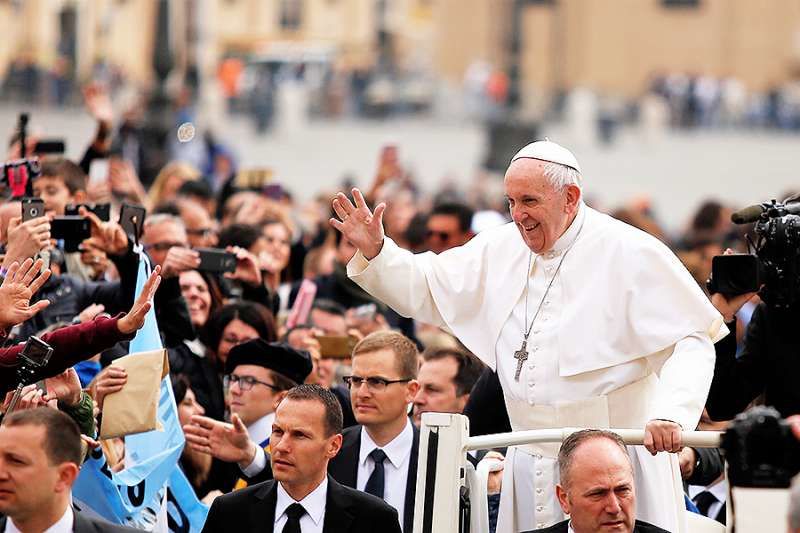A recent trip to Lithuania, taken by Archbishop Paul Richard Gallagher, the Vatican’s “minister for foreign affairs”, has raised expectations for the possibility of a papal trip to the Baltic states in September.
The trip has not yet been officially announced, but there have been signals that it will be planned between the second and the third week of September. The Pope would go to Lithuania, Latvia and Estonia, to celebrate the 100th year of their establishment as independent states.
Archbishop Gallagher was in Lithuania Jan. 11-13, to take part in the “Meeting of the Snows” — a multilateral regional meeting — and for the celebration of the 27th anniversary of Lithuanian independence from the USSR.
The possibility of the Pope’s visit was on the agenda of a Jan. 12 meeting between Archbishop Gallagher and Lithuanian president Dalia Gybauskaite. President Gybauskaite stressed that the Pope’s visit would be “a special gift” for Lithuania’s centenary, and underscored that the Holy See has supported Lithuania since the country declared its independence from Russia in 1918.
The Lithuanian president’s comments are a clue that a 2018 papal trip to the Baltic States is a concrete possibility.
In fact, news of the upcoming trip was de facto confirmed by Bishop Philippe Jourdan, the apostolic vicar of Estonia.
In a letter to his faithful dated Dec. 8, Bishop Jourdan wrote that “after years of waiting and prayers, we now know that Pope Francis will visit Estonia next year.”
Bishop Jourdan stressed that an invitation to the Pope was jointly sent by the Catholic Church and the archbishop of the Estonian Evangelical Lutheran Church. Lutherans are the largest religious group in the country.
In a comment first offered to Catholic News Agency Dec. 15, Bishop Jourdan recounted that “we are preparing with joy for Pope Francis’ visit.”
Bishop Jourdan said that “unlike Lithuania and Latvia,” Estonia is “a country of Lutheran and Orthodox tradition,” and is currently “one of the least religious countries of the world.”
Bishop Jourdan said that there are some 6-7,000 Catholics in Estonia, “one of the smallest communities Pope Francis has ever met,” and for that reason, “the trip represents a challenge for the Pope.”
Despite the “extreme religious situation of Estonia,” Bishop Jourdan added, “Pope Francis is very much awaited in the country, by Catholics and members of other Christian confessions.”
Archbishop Zbignevs Stankevics of Riga, the capital of Latvia, has taken a more prudent approach on the issue. “I can only say that the Pope is seriously considering a trip to Latvia,” he told Catholic News Agency Dec. 15.
Archbishop Stankevics sent an invitation to Pope Francis in 2016, via Cardinal Pietro Parolin. The Vatican Secretary of State visited Latvia May 11-13, 2016, to celebrate the 25 years of diplomatic relations between Latvia and the Holy See.
Raimonds Vejonis, Latvia’s president, visited Pope Francis June 2, 2017, and he reiterated the invitation to the Pope.
Janis Siknsnis, an adviser to President Vejonis, declared Nov. 23 that the Pope was planning to go to Latvia.
If the trip is confirmed, it will be the second time that a Pope visits the Baltic republics. Pope St. John Paul II traveled there in 1993, beginning in Lithuania, the Baltic Republic with the biggest Catholic community — 75 percent of the country’s population.
The visit would mark the 100th anniversary of the establishment of the Baltic states. Until 1917, Estonia, Latvia and Lithuania were part of the Russian empire. They gained independence in 1918, and they remained independent until 1940. They became part of Soviet Union in 1940-1941, endured Nazi domination in 1940-1944, and were returned to the Soviet Union in 1945-1991.
In 1991, they regained democratic independence, and have been EU Members since 2004.

